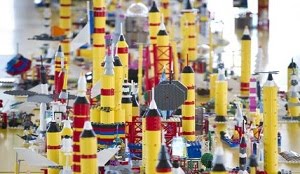A new NASA probe beamed down live images of the moon early Tuesday to reveal a stark surface littered with craters, as it flew toward a planned crash at the lunar south pole later this year.
The $79 million Lunar Crater Observation and Sensing Satellite, or LCROSS, launched toward the moon on June 18 and began sending images today at 8:20 a.m. EDT (1220 GMT).
LCROSS and an attached empty Centaur rocket stage swooped down near the lunar south pole and continued north along the far side of the moon. The spacecraft is getting into position to crash down on the surface on Oct. 9.
"I am staring at Mendeleev (Lat 5.7N, Lon 140.9E), a large ancient impact basin with uniform floor deposits," the spacecraft (or rather, NASA spokespeople writing as the spacecraft) posted on Twitter shortly after the flyby began.
At its closest approach, LCROSS was only about 2,000 miles (3,200 km) from the moon.
During the flyby, NASA's science team will calibrate the spacecraft's cameras and spectrometers. To study the concentration of minerals and elements in the lunar soil, the LCROSS visible spectrometer will make the first near-ultraviolet survey of certain spots on the far-side of the moon.
"This swingby is my first test of my Medium Gain Antenna (MGA) to support high science rate," LCROSS "tweeted" this morning.
NASA plans to slam LCROSS down near the south pole in a permanently shadowed crater. The impact is intended to create a pair of debris plumes that will be analyzed for the presence of water ice or water vapor, hydrocarbons and hydrated materials.
LCROSS's sister spacecraft, the Lunar Reconnaissance Orbiter (LRO), arrived at the moon a few hours earlier than LCROSS to begin a stable lunar orbit. The robotic probe is expected to spend at least one year mapping the moon for future manned missions, as well as several more years conducting science surveys.
LRO and LCROSS launched together aboard an Atlas 5 rocket last week. They comprise NASA first moon mission in more than a decade.
NASA plans to use the data and images beamed back from the two spacecraft, which together represent a $583 million mission, to aid its effort to return humans to the lunar surface by 2020.
LCROSS will not be the first spacecraft to crash into the moon this year. The Japanese space agency's Kaguya lunar probe slammed into the lunar surface June 10, and China's Chang'e 1 spacecraft impacted in March.




0 comments:
Post a Comment